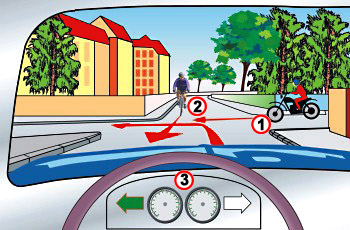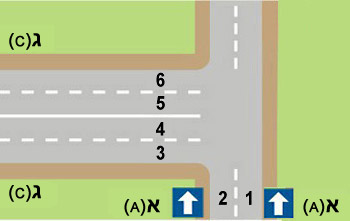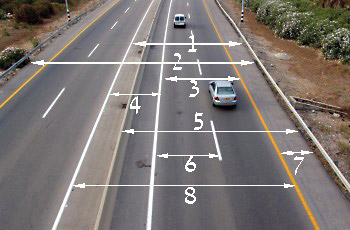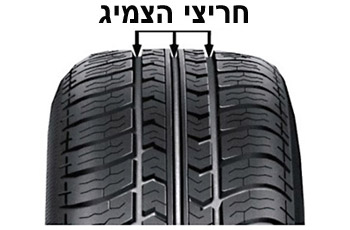Question:1
What should you check before beginning to make a right-turn?
Category : Rules and Regulations
Question:2
How is a driver required to conduct himself when approaching schools or playgrounds?
Category : Rules and Regulations
Question:3
Is it obligatory to obey the directions and signals of a municipal inspector in uniform?
Category : Rules and Regulations
Question:4
Under what conditions will the Licensing Authority approve change of ownership of a vehicle?
Category : Rules and Regulations
Question:5
Is it permitted to stop a vehicle alongside a pedestrian guardrail?

Category : Rules and Regulations
Question:6
You are driving vehicle no. 3. To which of the following vehicles would you give right-of-way?

Category : Rules and Regulations
Question:7
How should a driver of a vehicle that was involved in a road accident with casualties conduct himself?
Category : Rules and Regulations
Question:8
When you are standing with your vehicle before an intersection while the red light is on, and you notice a security vehicle behind you, with its siren on and its lights flashing:
Category : Rules and Regulations
Question:9
Can an owner of a valid driver’s license for a particular group of vehicle drive any vehicle of the same group?
Category : Rules and Regulations
Question:10
From the answers before you, where especially should a driver slow down?
Category : Rules and Regulations
Question:11
Under what condition is it permissible to install additional lamps to those already installed in a vehicle?
Category : Rules and Regulations
Question:12
What is the first thing a driver should verify before driving an unfamiliar vehicle?
Category : Rules and Regulations
Question:13
The following illustration shows an intersection with traffic signs. What is the correct manner of making a turn from street A to street C?

Category : Rules and Regulations
Question:14
The following illustration shows a wide road. Which number in it marks a road?

Category : Rules and Regulations
Question:15
When a driving license includes certain restrictions:
Category : Rules and Regulations
Question:16
Is a motorcyclist permitted to cross a sidewalk?
Category : Rules and Regulations
Question:17
What does the law state about the non-use of a vehicle for a period of more than one month?
Category : Rules and Regulations
Question:18
To which of the following should you give right-of-way when making a left turn in an intersection where no road sign is placed?
Category : Rules and Regulations
Question:19
What is the penalty for driving whilst disqualified?
Category : Rules and Regulations
Question:20
A passenger is not permitted on a motorcycle unless:
Category : Rules and Regulations
Question:21
The depth of the grooves in a tire (pneumatic-air pressure) which comes in contact with the road should not be less than:

Category : Rules and Regulations
Question:22
From the answers before you, where especially should a driver slow down?
Category : Rules and Regulations
Question:23
What is a “pedestrian crossing”?
Category : Rules and Regulations
Question:24
A “central divider” is:
Category : Rules and Regulations
Question:25
A driver exiting a gas station must give right of way:
Category : Rules and Regulations
Question:26
Is it permitted to drive under the influence of sedatives?
Category : Rules and Regulations
Question:27
How should you behave when leaving a private yard a petrol station or an entrance to a properity or a house ?
Category : Rules and Regulations
Question:28
Upon completion of the two year “new driver” period, a regular driver’s license will not be given to a “new driver” who was convicted of:
Category : Rules and Regulations
Question:29
How do you give a signal for braking?
Category : Rules and Regulations
Question:30
It is prohibited to stop, park or stand a vehicle on or before a pedestrian crossing, within a distance of:
Category : Rules and Regulations

